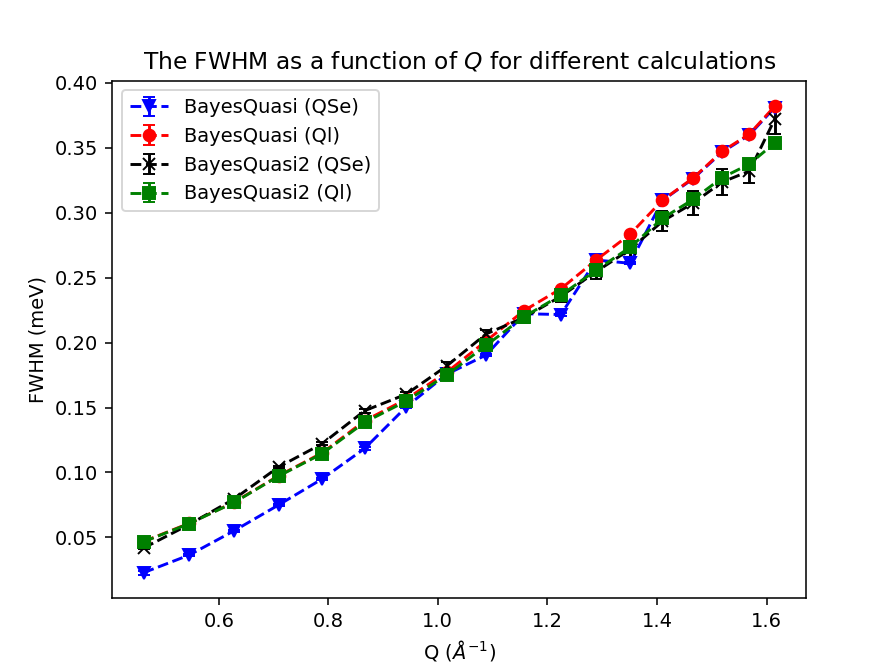BayesQuasi2 v1¶
Summary¶
This algorithm uses the Python quickBayes package to fit the quasielastic data (Lorentzians or stretched exponential).
Properties¶
Name |
Direction |
Type |
Default |
Description |
|---|---|---|---|---|
Program |
Input |
string |
QL |
The type of program to run (either QL or QSe). Allowed values: [‘QL’, ‘QSe’] |
SampleWorkspace |
Input |
Mandatory |
Name of the Sample input Workspace |
|
ResolutionWorkspace |
Input |
Mandatory |
Name of the resolution input Workspace |
|
EMin |
Input |
number |
-0.2 |
The start of the fit range. Default=-0.2 |
EMax |
Input |
number |
0.2 |
The end of the fit range. Default=0.2 |
Elastic |
Input |
boolean |
True |
Fit option for using the elastic peak |
Background |
Input |
string |
Flat |
Fit option for the type of background. Allowed values: [‘Linear’, ‘Flat’, ‘None’] |
OutputWorkspaceFit |
Output |
WorkspaceGroup |
Mandatory |
The name of the fit output workspaces |
OutputWorkspaceResult |
Output |
The name of the result output workspaces |
||
OutputWorkspaceProb |
Output |
The name of the probability output workspaces |
Description¶
This algorithm replaces BayesQuasi.
The algorithm has two modes, QL and QSe. These two modes are the same, except for the fitting function being used. The sample and resolution are cropped and rebinned so that they have the same binning. The fitting function is then generated with the user selected background plus a convolution of the resolution data with a delta function (if elastic) and one of the following:
one, two and three Lorentzians for the QL mode
one stretched exponential for the QSe mode
The output includes a workspace of the fitting parameters, the loglikelihoods (the least negative is the most likely fit) and the fits (interpolated back onto the original sample binning).
The stretched exponential results for the FWHM are different to BayesQuasi, as shown by the figure below. However, the new results agree with the FWHM values for fitting a single Lorentzian (‘QL’). The new method provides FWHM results that are comparable for all \(Q\) values (green and black data), unlike the original code that has a divergence for low :math`Q` values.

Categories: AlgorithmIndex | Workflow\MIDAS
Source¶
Python: BayesQuasi2.py